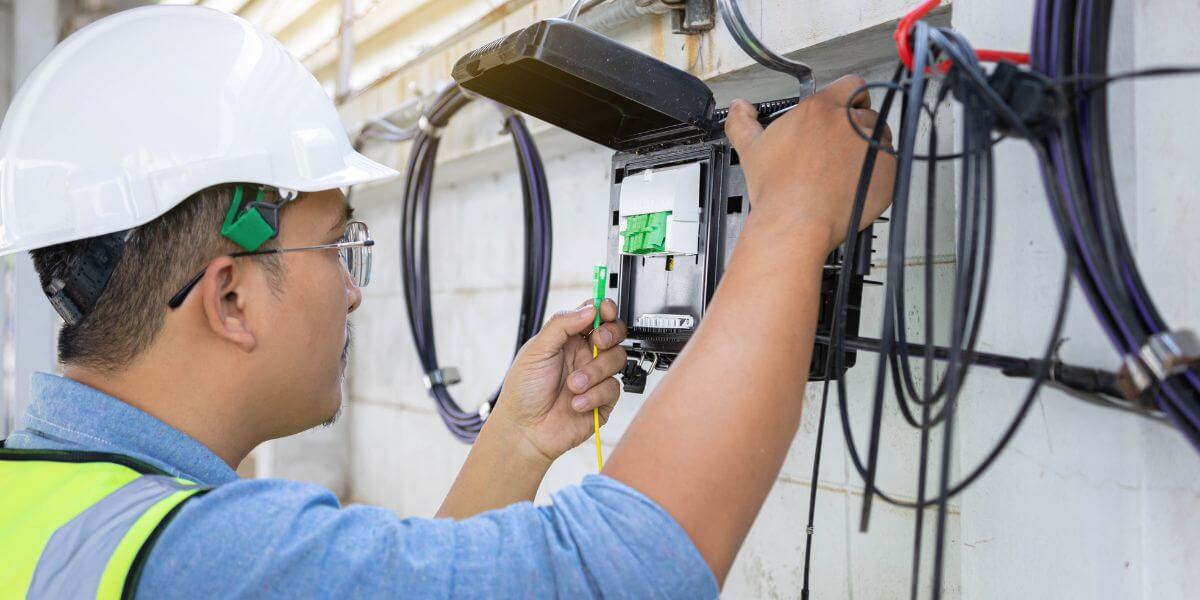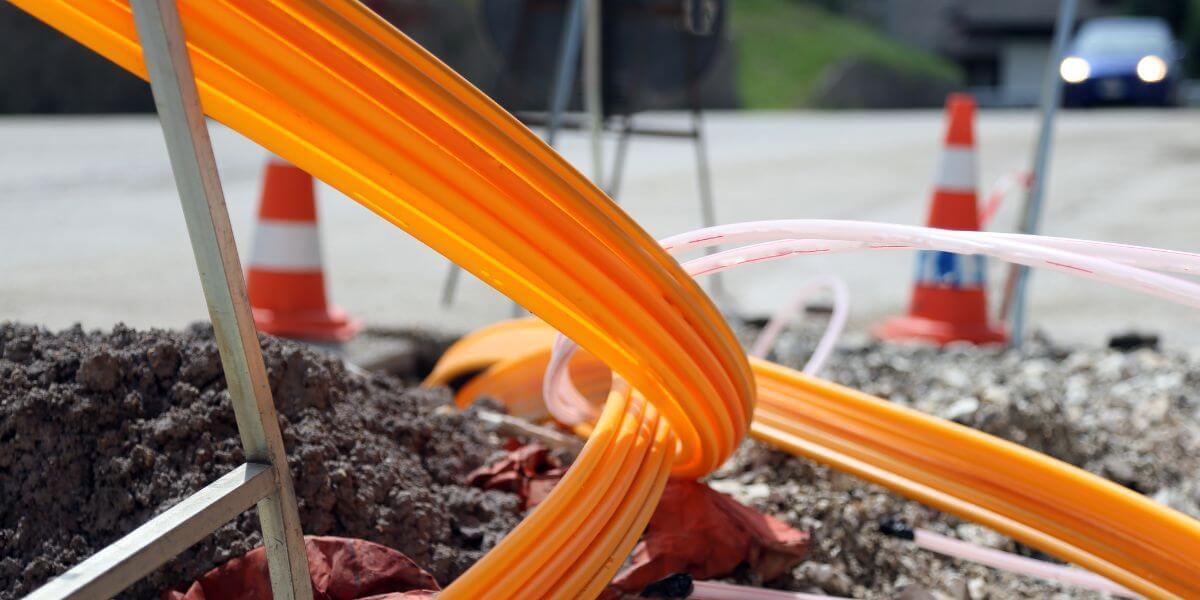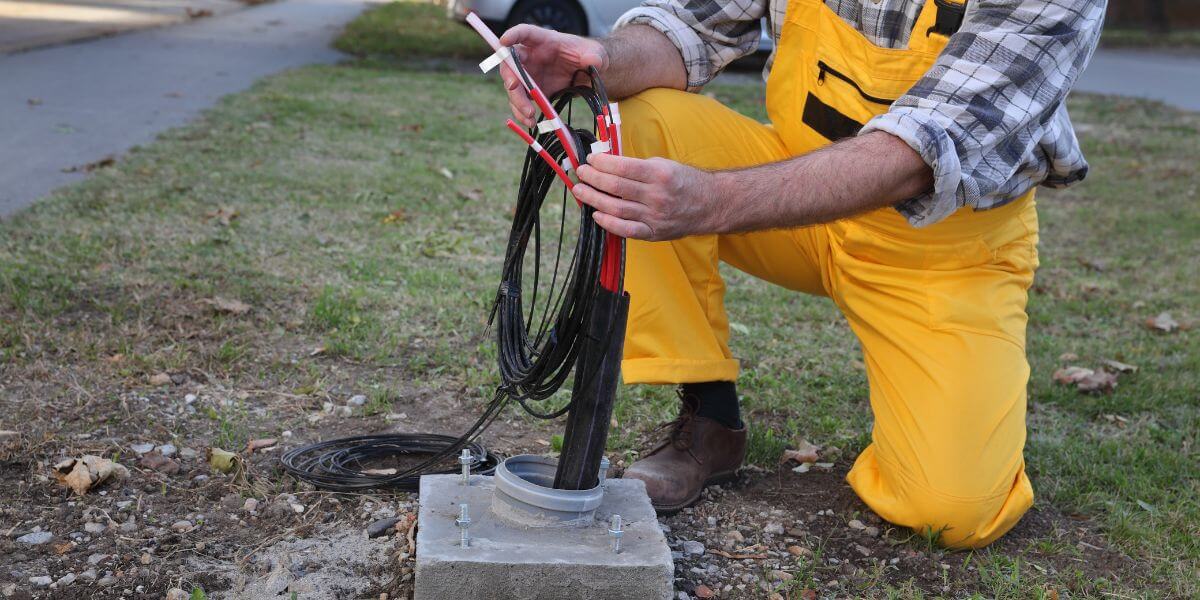Understanding Fiber Bandwidth Capacity: Why Fiber is the Ultimate Future-Proof Internet Solution
Table of Contents
When searching for the best internet in your area, one of the most critical factors to consider is bandwidth capacity, which is the maximum amount of data that can be transmitted over your internet connection.
A lot of people only look at advertised speeds when comparing internet providers, but fiber bandwidth capacity shows why fiber-optic technology is way ahead of other internet options out there.
What is Fiber Bandwidth Capacity?
Fiber bandwidth capacity refers to the maximum data transmission capability of fiber-optic cables, which use pulses of light to carry information through ultra-pure glass strands. Unlike traditional copper-based technologies that rely on electrical signals, fiber-optic cables can transmit massive amounts of data at incredible speeds with virtually no degradation over distance.
The remarkable truth about fiber bandwidth capacity is that it’s practically unlimited. Current fiber networks deployed today use only a tiny fraction—approximately 1/60,000th—of their actual capacity potential [1]. This means that when you compare internet plans between fiber and other technologies, you’re not just comparing today’s speeds. You’re also comparing decades of future capability.
The Science Behind Virtually Unlimited Capacity
To understand why fiber bandwidth capacity is so extraordinary, it helps to examine how the fiber technology works. Optical fiber transmits data using light wavelengths across an optical spectrum ranging from 1260 nanometers to 1650 nanometers. Engineers estimate that a single strand of standard fiber-optic cable could theoretically support over 600 terabits per second, roughly 60,000 times faster than today’s 10 Gigabit per second (Gbps) residential systems.
This incredible capacity comes from fiber’s ability to carry multiple wavelengths of light simultaneously, each carrying different data streams. As technology advances, equipment manufacturers can unlock more of this capacity without changing the underlying fiber infrastructure. When you compare internet providers and their long-term value propositions, this scalability becomes a decisive factor.

How fiber compares to other technologies
When conducting an internet comparison between fiber and other broadband technologies, the differences in bandwidth capacity become stark:
Cable Internet (DOCSIS): Cable networks have required multiple infrastructure upgrades from DOCSIS 1.0 to the current DOCSIS 4.0 standard. Each upgrade necessitates significant equipment changes and often additional fiber connections to neighborhood nodes. Despite these upgrades, cable’s shared bandwidth model means your speeds can slow during peak usage times.
DSL Technology: Digital Subscriber Line (DSL) technology has essentially reached its physical limitations. The copper infrastructure that carries DSL signals simply cannot support the bandwidth demands of modern applications, which is why many providers are abandoning DSL in favor of fiber networks.
5G and Wireless: While 5G networks offer impressive speeds, they rely heavily on fiber backhaul connections and face spectrum limitations. Wireless technologies have required continuous upgrades from 1G through 5G, with 6G already in development.
Fiber-Optic Networks: The same fiber infrastructure deployed 35 years ago continues to support today’s fastest internet services. A fiber network installed in 1988 can currently handle multiple 100 Gbps wavelengths without any infrastructure modifications.
Real-World Applications of Superior Bandwidth Capacity
Fiber bandwidth capacity really stands out when you think about how it supports both current and future applications that other technologies just can’t handle reliably:
4K and 8K Streaming: While a single 4K stream requires about 25 Mbps, households with multiple users streaming simultaneously need substantially more bandwidth. Fiber’s capacity ensures no degradation in quality even with multiple 8K streams running concurrently.
Remote Work and Video Conferencing: Fiber’s symmetrical upload and download speeds—a unique advantage when you compare internet plans—ensure that your remote work video calls remain crystal clear while you’re simultaneously uploading large files or backing up data to the cloud.
Smart Home Technology: Modern homes increasingly rely on dozens of connected devices, from security cameras to smart appliances. Fiber bandwidth capacity ensures these devices operate seamlessly without competing for limited bandwidth resources.
Virtual and Augmented Reality: Emerging VR and AR applications require not just high speeds but also extremely low latency. Fiber networks offer the lowest potential infrastructure-caused latency at 1.1 to 2.1 milliseconds, compared to 2.1 to 7.6 milliseconds for even the best cable alternatives.
Future Technologies: Applications we haven’t yet imagined, from advanced AI assistants to holographic communication, will require bandwidth capabilities that only fiber can provide.
The Economic Advantage of Unlimited Capacity
When evaluating internet prices and long-term value, fiber’s virtually unlimited bandwidth capacity offers significant economic advantages. While initial installation costs may be higher, fiber networks don’t require the constant infrastructure upgrades that other technologies demand.
Cable companies need to continually invest in node splits, additional fiber runs to neighborhoods, and equipment upgrades to increase capacity [2]. DSL providers are abandoning their copper networks entirely. Wireless carriers need continuous spectrum acquisitions and tower densification. These ongoing costs are inevitably passed on to consumers through higher prices and fees.
Fiber networks, by contrast, can dramatically increase speeds and capacity simply by upgrading the equipment at each end of the fiber connection. The fiber itself (the most expensive part of the infrastructure) remains unchanged and continues to provide value for decades.

Why fiber stands alone among internet technologies
When you research the best internet providers in your area, it’s important to understand that fiber technology occupies a unique position. Every other broadband technology is just a stepping stone or compromise on the way to fiber. Cable companies are pushing fiber deeper into their networks. Wireless carriers rely on fiber backhaul. Even satellite internet providers are exploring fiber-like technologies for their ground stations.
Fiber bandwidth capacity eliminates these compromises entirely. The technology delivers:
- Symmetrical speeds: Equal upload and download capabilities
- Consistent performance: No slowdowns during peak usage periods
- Distance independence: Speeds remain constant regardless of your distance from network equipment
- Weather resistance: Underground and properly installed aerial fiber isn’t affected by weather conditions
- Electromagnetic immunity: Fiber signals can’t be disrupted by electrical interference

Future-proofing your internet investment
The concept of future-proofing becomes critical when you compare internet providers for long-term value. Technologies like artificial intelligence, autonomous vehicles, telemedicine, and smart city infrastructure will require bandwidth capabilities that far exceed today’s typical usage patterns.
Fiber bandwidth capacity ensures that your internet connection won’t become obsolete as these technologies mature. While other internet technologies will require costly upgrades or complete replacement, fiber networks can scale to meet future demands through equipment upgrades alone.
Consider that internet speeds have increased immensely since the early 1990s, and this growth shows no signs of slowing. Applications that seem futuristic today, like real-time holographic communication or instant cloud-based AI processing, may become commonplace within the next decade. Only fiber bandwidth capacity can support these evolving requirements.
Making the Right Choice for Your Needs
When comparing internet options, keep in mind that fiber bandwidth isn’t just about flashy technical specs. It’s about breaking free from the limitations of other internet technologies. Whether you’re a remote worker who needs reliable video conferencing, a family with multiple streaming devices, or a business planning for growth, fiber’s virtually unlimited capacity ensures your internet connection won’t become a bottleneck.
The decision becomes even clearer when you consider that fiber networks offer the best performance available today while simultaneously providing the foundation for tomorrow’s applications. When you choose fiber, you’re selecting the best internet service currently available, as well as investing in a technology that will continue to deliver superior performance for decades to come.
As you evaluate options and compare internet plans in your area, consider the long-term implications of your choice. Fiber bandwidth capacity helps make sure your internet connection remains cutting-edge for years to come, supporting applications and technologies that (some of which) haven’t even been invented yet.
Sources
[1] Fiber Broadband Association. “Fiber Broadband Scalability and Longevity."
[2] Cisco. “The First Step in Cable Network Transformation: Digitization."
